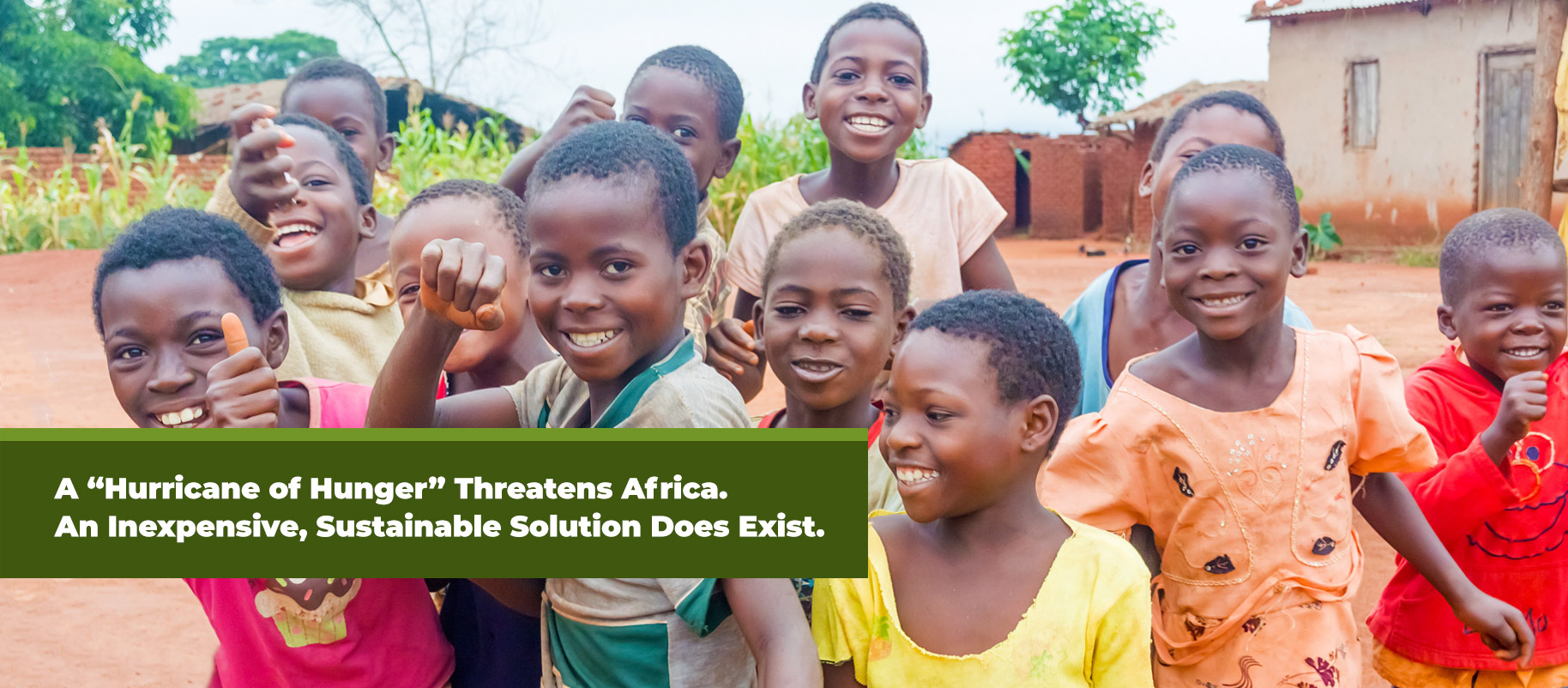
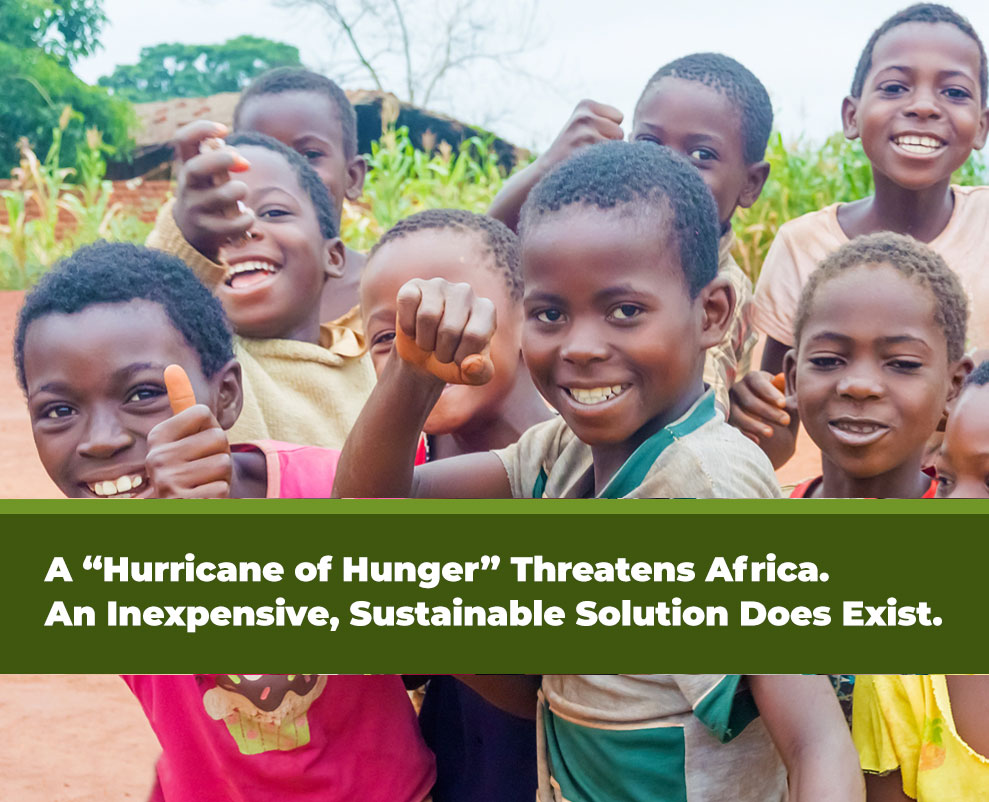
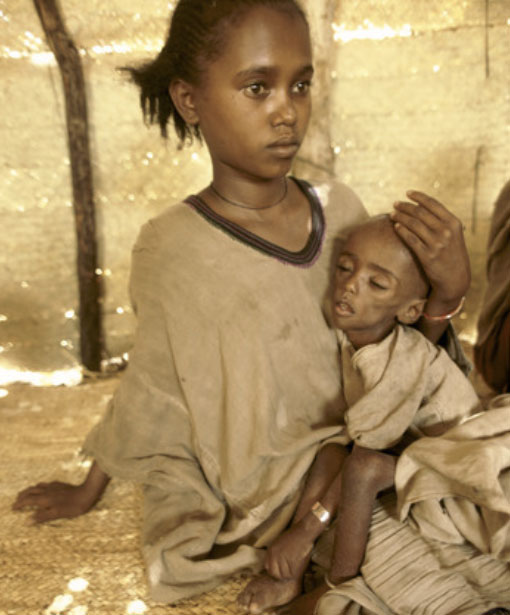
The death of even one child is always a major tragedy.
The Secretary General of the United Nations recently stated that Africa is suffering from a “Hurricane of Hunger.”
The number of people in “serious need of food aid” has shot up from less than 10 million most years before 2010, to 20 million in 2017, to over 60 million people last year. Within the next two years, it could shoot up to 80 or 100 million people. Furthermore, the food stores to feed all these people are largely used up.
If even 60 million of these people were to die, this would become the worst famine in human history.
Furthermore, giving people food decade after decade only feeds them a day at a time, making them even more dependent on others. We absolutely must teach them to produce their own food, so they can feed themselves—for lifetimes to come.
What is Causing This Disaster?
To cure a disease, we need to diagnose it correctly. Back in the 1970’s, Roland Bunch, the founder and director of Better Soils, Better Lives, noticed that farmers across Africa were abandoning the planting dates they had used for centuries. They were doing so because of the unpredictability and irregularity of the rains, which in turn was due to climate change. Even so, climate change is not the primary cause of the downward trend of crop yields across Africa. Total rainfall has decreased by less than 10%, and this minor change cannot come close to explaining the tremendous losses in productivity that we are presently seeing.
The real cause of the crisis stems from Africa’s increasing population pressure on the land. Forest fallowing (also called slash-and-burn agriculture) kept farmer’s soils fertile for over 2,000 years. Most farm families now have only 2 to 3 acres. This means they cannot grow forests on their land and still have enough land to produce sufficient food. The forced abandonment of forest fallowing has caused the organic matter content of their soils to drop from about 4% to less than 1%. As a result, the dominant clay soils have become nearly as hard as rock, causing the rainwater infiltration to drop from about 60% to less than 20%.
This means that while climate change has brought a 10% drop in soil moisture, the death of forest fallowing has brought a 60% drop.
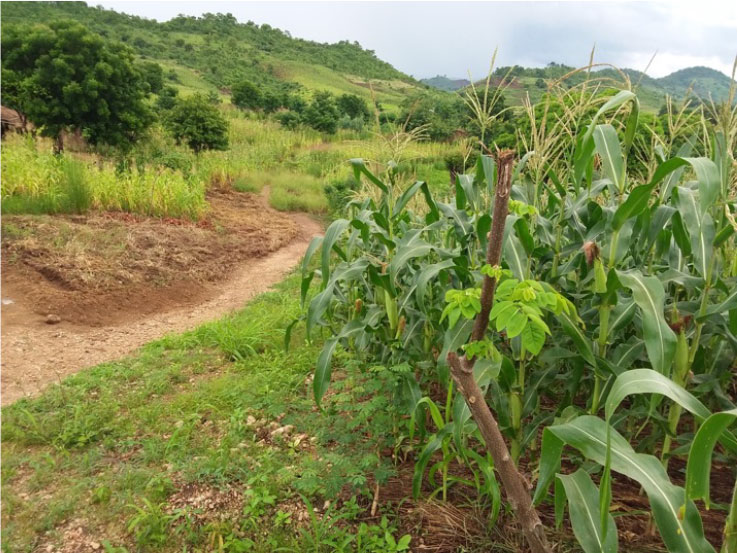
A demonstration plot. This farmer-trainer planted gliricidia trees in his corn field next to the main trail into his village (note the pruned tree in the foreground). Beneficial plants like gliricidia trees can result in healthy, dark green corn that villagers will compare to the stunted, yellow corn of the other fields. Dramatic demonstrations like this can inspire scores of other farmers to add gliricidia and other beneficial plants to their fields.
“Imitate the forest”
The answer to the hunger crisis exists all across Africa. Undisturbed tropical forests never die of drought. Tropical forests maintain high levels of soil organic matter, they never need to be plowed or weeded, they produce huge amounts of biomass per acre, they maintain maximum biodiversity, they have no need of expensive fertilizers or toxic pesticides, and they capture huge amounts of the atmospheric carbon that causes global warming.
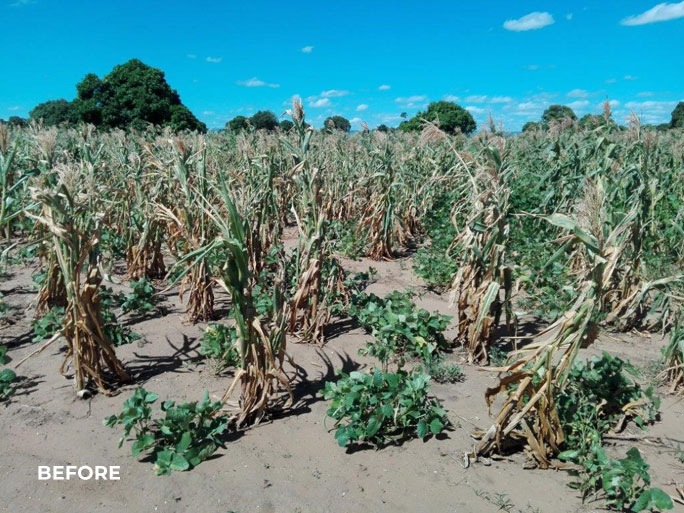
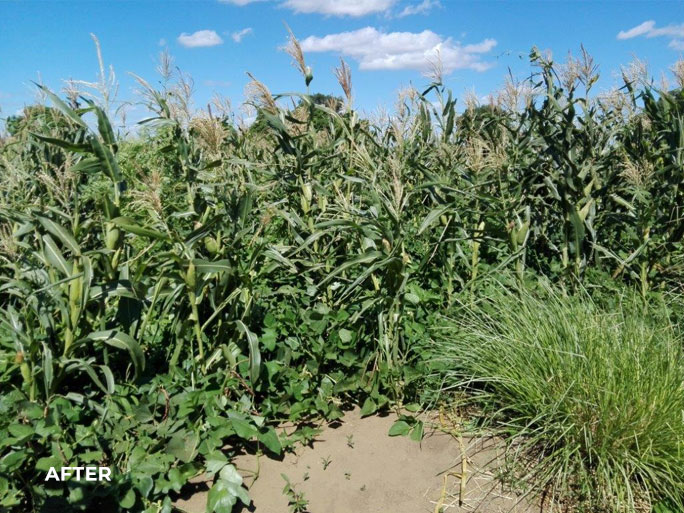
Drought tolerance of corn. These photos show fields a few feet from each other, taken minutes apart (note the same clouds to the right of the first photo and near the center of the second photo). The farmer treated both fields identically, except that she planted the field on the left with 60-day cowpeas for the first time this year, and has planted the field on the right with cowpeas for 6 years. The field on the right produced over 6 times the maize per acre of the drought-stricken field on the left.
Farmers can imitate the forests in their fields by introducing selected trees and other plants into those fields together with their basic grains—their corn, sorghum, millet and cassava. But which species can both enhance their basic grains and offer other benefits? And how must farmers manage their “newly reforested” fields?
For 40 years, Roland has focused on answering precisely these two questions. For the last 12 years, he has been adapting these answers to the many diverse environmental, agricultural, economic and cultural settings in Africa.
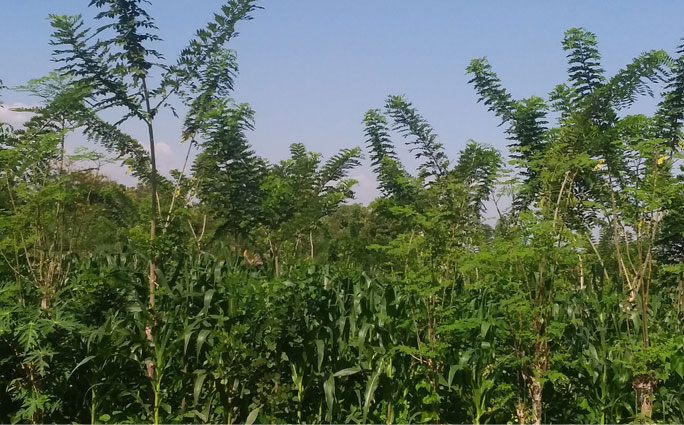
Imitating the forest. Even the corn plants in the background, well inside this field, are tall and dark. We might expect them to be short and yellow due to competition with other plants. Yet after 7 years of using beneficial plants, their organic matter has softened the soil. Now the plants’ roots grow deep into the softened soil rather than hitting a hard pan, causing them to grow horizontally and compete with neighboring plants.
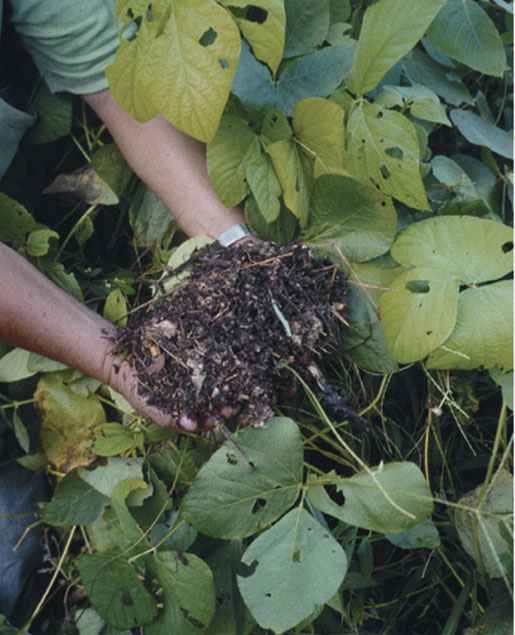
We Can End the “Hurricane of Hunger”
The plants that we introduce are selected from some 120 species of beneficial plants, mostly legumes. These plants are called “green manure/cover crops,” or “gm/ccs.” They include trees, bushes, climbing and crawling plants that can fertilize the soil, control weeds, and overcome the droughts.
In addition to fulfilling the above three functions, we also select gm/cc species that can provide high-protein human foods that are available most of the year, nutritious year-round animal fodder, firewood, ideal shade for the basic grain crops, protection from winds that dry out the soil, and mulches that protect the soil and feed the crops. As with a forest, gm/ccs can also help crops resist diseases and insect pests, dramatically reduce the use of fertilizers, act as windbreaks, and reduce erosion.
Very importantly, they dramatically reduce the amount of hard labor done by African women by completely eliminating soil preparation and reducing the work involved in weeding and firewood collection.
Our Goal
Better Soils, Better Lives’ goal is to triple the productivity and end the droughts for at least 70% of all the smallholder farmers in sub-Saharan Africa within the next 20 years. We will do this by helping other development organizations train their farmers both how to use gm/ccs and how to train their neighbors. Gm/ccs are already so popular and the farmer-to-farmer training so effective that it has been difficult to supply seeds and cuttings to all the farmers who are ready to use them.
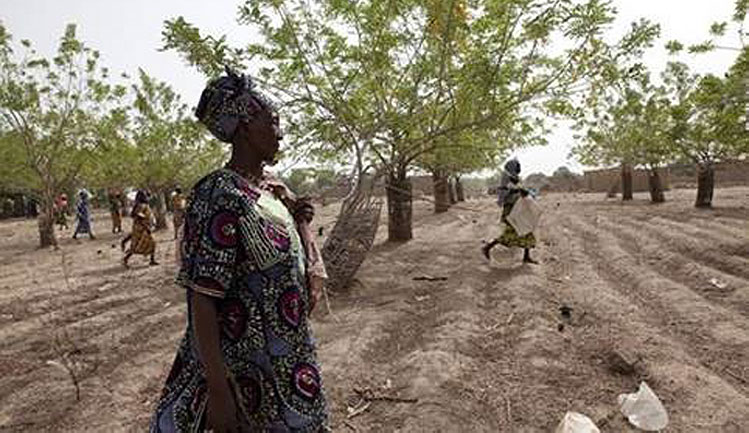
Gliricidia trees. In addition to fertilizing the soil, gliricidia trees produce fodder during the dry season when—as is visible in this field—virtually no other fodder is available. Note that these gliricidia trees have not been pruned as much as we usually recommend. This is because the trees are so effective that scores of neighbors want seeds to grow their own trees, so this women’s group is able to earn additional revenue by selling the seeds at five dollars a pound.
Support Us
Support Better Soils, Better Lives’ with your tax deductible donation today!
